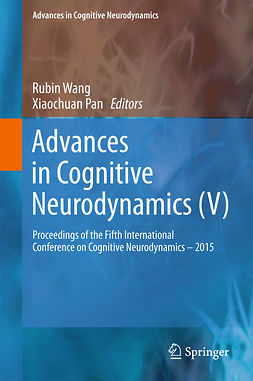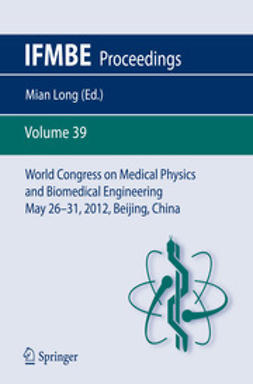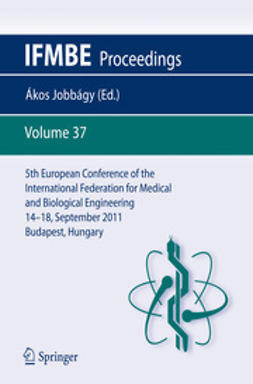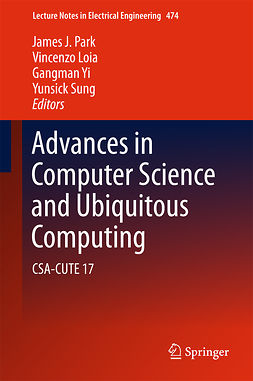Gu, Fanji
Advances in Cognitive Neurodynamics ICCN 2007
Part I. Microscopic Cognitive Neurodynamics
1. Dynamic Interaction Networks and Global Ontology-Based Modelling of Brain Dynamics
Nikola Kasabov, Lubica Benuskova
2. The Cauchy Problem for Spiking Neuron Models
Romain Brette
3. On the Dynamics of Spectro-Temporal Tuning in Auditory Cortex
Didier A. Depireux, Heather D. Dobbins, Barak Shechter
4. A European Collaboration on Cerebellar LTD and Pattern Recognition
Erik De Schutter, Volker Steuber
5. The Role of Layer 6 Feedback Cells in the Primary Visual Cortex
Wei Wang
6. What Language is Spoken Here? Conversations Between Neurons in Primate Visual Cortex
Vivien A. Casagrande, Xin Chen, Walter J. Jermakowicz
7. On the Emergence of Orientation Biases in V1
Mehdil Nouri Shirazi
8. Stress Affects Synaptic Plasticity and Basal Synaptic Transmission in the Rat Hippocampus
Amer Kamal, Ivan Urban, Willem Hendrik Gispen
9. Physiological Evidence for Cantor Coding Output in Hippocampal CA1
Yasuhiro Fukushima, Makoto Yoneyama, Minoru Tsukada, Ichiro Tsuda, Yutaka Yamaguti, Shigeru Kuroda
10. Theta Phase Coding and Suppression of Irrelevant Plastic Change Through STDP in the Entorhin-Hippocampal System amid Background Noise
Jun Igarashi, Hatsuo Hayashi
11. Effect of Low-Frequency Stimulation on Spontaneous Firing in Cultured Neuronal Networks
J. van Pelt, I. Vajda, P.S. Wolters, G. Ramakers, A. Ooyen
12. Modeling Neurons of the Inferior Colliculus
Harry Erwin, Mark Elshaw, Adrian Rees, David Perez-Gonzalez, Stefan Wermter
13. Synchronization Effects in Networks of Striatal Fast Spiking Interneurons – Role of Gap Junctions
Johannes Hjorth, Lennart Hedlund, Kim T Blackwell, Jeanette Hellgren Kotaleski
14. Multilayer In-Place Learning Networks with Adaptive Lateral Connections: Models and Simulations
Weiya Shi, Juyang Weng, Mingmin Chi, Xiangyang Xue
15. Stimulus-Induced Pairwise Interaction Can Be Revealed by Information Geometric Approach
Hiroyuki Nakahara, Masanori Shimono, Go Uchida, Manabu Tanifuji
16. A Dynamical Model of Fast Intrinsic Optical Signal of Neural Burstings
Jianzhong Su, Hanli Liu, Yuanbo Peng
17. The Mechanism of Bifurcation-Dependent Coherence Resonance of Morris-Lecar Neuron Model
Guangjun Zhang, Jianxue Xu, Jue Wang, Zhifeng Yue, Chunbo Liu, Hong Yao, Xiangbo Wang
18. Noise-Induced Coherence Resonance in Morris-Lecar Neuron System
Bao-Hua Wang, Qi-Shao Lu, Xiao-Juan Sun
19. Chaotic Burst Synchronization in a Small-World Neuronal Network
Yanhong Zheng, Qishao Lu, Qingyun Wang, Fang Han
20. A Stochastic Resonance Memory Mechanism of Hippocampus
Yan Chuankui, Liu Shenquan
21. Theta Phase Precession Enhance Single Trial Learning in an STDP Network
Enhua Shen, Rubin Wang, Zhikang Zhang
22. A Numerical Mechanism for Square-Wave or Elliptic Bursting of Bursts in a Map-Based Neuron Network
Hongjun Cao, Miguel A.F. Sanju´n
23. Sub-Threshold Oscillation and Transient Response in Neural Coding
Jianxue Xu
24. Setting Up New Memories: The Ideal Job for The Mammalian Dentate Gyrus
Gergely Papp, Alessandro Treves
25. Neural Network Model Generating Symbol Sequence for Songs of Bengalese Finch
Junichirou Kotani, Yasukuni Mori, Ikuo Matsuba
26. A New Method for Characterizing the Variability of the Spike Trains
Ying Du, Qi-Shao Lu, Shi-Min Wang
Part II. Mesoscopic Cognitive Neurodynamics; Transitions Between Levels
27. Proposed Renormalization Group Analysis of Nonlinear Brain Dynamics at Criticality
Walter J. Freeman, Tian Yu Cao
28. Regulating Cortical Neurodynamics at Different Scales
Hans Liljenström
29. A Thermodynamic Model of the Action-Perception Cycle in Brain Dynamics
Walter J. Freeman
30. Dynamic Field Theory as the Interface Between Neuronal Dynamcis and Embodied Cognition
Gregor Schöner
31. The Task of Cognitive Neuroscience
Christoph von der Malsburg
32. Functional Roles of Feedback Signals from Higher-Order Areas to Lower-Order Areas in the Visual Cortical Pathways
Tiande Shou
33. Dynamics of Population Decoding with Strong Inhibition
Thomas Trappenberg
34. Global Oscillations of CA3 Neural Fields
Francesco Ventriglia
35. Behaviour Signatures of Continuous Attractors
Si Wu
36. Statistical Outliers in Neuron Population and Myelinated Fiber Development in Human Neocortex
David L. Cooper, James E. Gentle, James L. Olds
37. Studies on Synchronization Using KIV Model
Mark H. Myers, Robert Kozma, Walter J. Freeman
38. Synchronous Firing and Its Control in Neuronal Population with Time Delay
Xianfa Jiao, Rubin Wang
39. Sequence Memory with Dynamic Synapses and Chaotic Neurons
Min Xia, Zhijie Wang, Jian’an Fang
40. Interacting Turing and Hopf Instabilities Drive Pattern Formation in a Noise-Driven Model Cortex
Moira L. Steyn-Ross, D.A. Steyn-Ross, M.T. Wilson, J.W. Sleigh
41. Context-Dependent Processing of Spatiotemporal Patterns Based on Interaction Between Neurodynamical Systems
Takashi Hasuo, Ken Yamane, Masahiko Morita
42. The Synchronization and Associative Memory of Izhikevich Neural Network
Wei Zhang, Qingli Qiao, Xuyuan Zheng, Xin Tian
43. Connectivity Dependent Effects in Cognitive Neurodynamics of Mental Disorders
Hans Liljenström, Yuqiao Gu
44. Corticopetal Acetylcholine: A Role in Attentional State Transitions and the Genesis of Quasi-Attractors During Perception
Hiroshi Fujii, Kazuyuki Aihara, Ichiro Tsuda
45. Cortical Anatomy and the Spatiotemporal Learning Rule
J.J. Wright, P.D. Bourke
46. Theta Phase Precession for Spatial Representation in the Entorhinal-dentate Gyrus-ca3 Network
Colin Molter, Yoko Yamaguchi
47. Optical Imaging of Visual Feature Representation in the Awake, Fixating Monkey
Anna Roe
48. Mechanisms of Spatial Integration in Primary Visual Cortex of the Primate
Alexander Thiele, Mark Roberts
49. Coding of Peripheral Olfactory Information in the Olfactory Bulb of Small Animals
Fuqiang Xu, James Shafer, Nian Liu, Douglas L. Rothman, Fahmeed Hyder, Gordon M. Shepherd
50. Neural Ensembles and Local Field Potentials in the Hippocampal-Prefrontal Cortex System During Spatial Learning and Strategy Shifts in Rats
Francesco P. Battaglia, Karim Benchenane, Mehdi Khamassi, Adrien Peyrache, Sidney I. Wiener
51. Temporal and Spatial Characters of Retinal Ganglion Cells’ Response to Natural Stimuli
Ying-Ying Zhang, Xin Jin, Hai-Qing Gong, Pei-Ji Liang
52. Synchronization of Chaotic Neuronal Networks with Small-world Topology
Fang Han, Qi-Shao Lu, Yan-Hong Zheng
53. Effects of Time Delay on Synchronization and Temporal Order in a Square Lattice Noisy Neuronal Network
Qing-Yun Wang, Zhi-Sheng Duan, Qi-Shao Lu
54. The Attractor Type of Complex Networks
Tan Ning, Huang Jing, Zhang Wei, Yang Fenghong
55. Asymptotical Stability of Delayed BAM Neural Networks with Generalized Activation Functions by Comparison Approaches
Yuguo Chen, Wudai Liao
56. Chaotic Synchronization of Hindmarsh-Rose Neurons Coupled by Cubic Nonlinear Feedback
Xiaoling Fang, Hongjie Yu
Part III. Macroscopic Cognitive Neurodynamics
57. When Is It Worth Working: Calculating the Motivational Value of Working
Barry J. Richmond, Giancarlo LaCamera, Alex Lerchner Takafumi Minamimoto
58. The Physiological and Biochemical Bases of Functional Brain
Imaging
Louis Sokoloff
59. Through Attention to Consciousness
J.G. Taylor
60. What Do Infants Infer? – Modelling Simple Cognition
J.G. Taylor, M. Hartley
61. The Time Dimension for Scene Analysis
DeLiang Wang
62. Implications for Psychiatry of a Thermodynamic Model of Brain Operating Far from Equilibrium
Walter J. Freeman
63. Optical Imaging of Plastic Changes Induced by Fear Conditioning in The Auditory Cortex of Guinea Pig
Yoshinori Ide, Jan Lauwereyns, Guy Sandner, Minoru Tsukada
64. Learning in Sparse Attractor Networks with Inhibition
Si Wu, Thomas Trappenberg
65. Dynamic Analysis of Motor Imagery EEG Using Kurtosis Based Independent Component Analysis
Xiaojing Guo, Lu Wang, Xiaopei Wu, Daoxin Zhang
66. Quantifying the Sequential Structure of Psychotic Behavior
P.E. Rapp
67. Machine Learning Framework for Inferring Cognitive State from Magnetoencephalographic (MEG) Signals
Andrey Zhdanov, Talma Hendler, Leslie Ungerleider, Nathan Intrator
68. Relevant Stimuli Encoding Surface Structural Textures by Touching Plain Woven Fabric
Jiyong Hu, Xin Ding, Rubin Wang, Wei Lin
69. Robust Auditory-Based Speech Feature Extraction Using Independent Subspace Method
Qiang Wu, Liqing Zhang, Bin Xia
70. Intra- and Interpersonal Coordination of Goal-Oriented Movements in a Working Scenario
Cordula Vesper, Sonja Stork, Mathey Wiesbeck, Anna Schubö
71. Network Synchronization/Desynchronization Defects in the Pathogenesis of Neuropsychiatric Disorders
R.S. Hernandez, P.E. Rapp
72. Exploring Causal Relationships in the Phase Functions of Coupled Van der Pol Oscillators
C.J. Cellucci, P.E. Rapp
73. EEG Theta Regulates Eye Saccade Generation During Human Object-place Memory Encoding
Naoyuki Sato, Yoko Yamaguchi
74. Hippocampal and Parahippocampal Neuronal Responses to Spatial and Non-Spatial Factors in Rats and Monkeys
Hisao Nishijo, Etsuro Hori, Tsuneyuki Kobayashi, Taketoshi Ono
75. Oscillatory Event Synchrony During Steady State Visual Evoked Potentials
François B. Vialatte, Justin Dauwels, Tomasz M. Rutkowski, Andrzej Cichocki
76. Information Entropy-Based Penalty for PARAFAC Analysis of Resting EEG
Eduardo Martínez-Montes, Rafael Sarmiento-Pérez, José M. Sánchez-Bornot, Pedro A. Valdés-Sosa
77. PARAFAC Analysis of Neural Correlates of Face Detection
Jhoanna Pérez-Hidalgo-Gato, Valia Rodríguez-Rodríguez, Eduardo Martínez-Montes
78. Human Vision Can Predict Semi-Random but the First-Order Linear Process
Manabu Shikauchi, Tomohiro Shibata
79. Memory Formation of Object Representation: Natural Scenes
Eiichi Hoshino, Fumihiko Taya, Ken Mogi
80. Dynamical Model of Action Reinforcement by Gated Working Memory
Adam Ponzi
81. Quantum Representation Theory for Nonlinear Dynamical Automata
Peter beim Graben
82. Superior Colliculus and Basal Ganglia Control the Saccadic Response in Motion Discrimination Tasks
Jiaxiang Zhang, Rafal Bogacz
83. A Synergetic Model for Operant Behaviors Under the Control of Fixed Interval Reinforcement Schedules
Shih-Che Lin, Jay-Shake Li
84. Adaptable Intermittency and Autonomous Transitions in Epilepsy and Cognition
Elan Liss Ohayon, Hon C. Kwan, W. McIntyre Burnham, Piotr Suffczynski, Fernando H. Lopes da Silva, Stiliyan Kalitzin
85. A Computational Approach to the Control of Voluntary Saccadic Eye Movements
Jeremy Fix
86. Spatial Considerations of Feedback Control for the Suppression of Epileptic Seizures
Beth A. Lopour, Andrew J. Szeri
87. EEG Scaling Difference Between Eyes-Closed and Eyes-Open Conditions by Detrended Fluctuation Analysis
Tingting Gao, Dan Wu, Dezhong Yao
88. Closure Positive Shifts Evoked by Different Prosodic Boundaries in Chinese Sentences
Weijun Li, Lin Wang, Xiaoqing Li, Yufang Yang
89. Structure–Function Relationship in Complex Brain Networks by Multilevel Modeling
Changsong Zhou, Lucia Zemanov´, Claus C. Hilgetag, J. Kurths
90. Model of Attention Allocation for Car Driver by Driving Plan and Prediction of Environment Change
Takashi Omori, Yuki Togashi, Koichiro Yamauchi
91. Top-Down Object Biased Attention Using Growing Fuzzy Topology ART
Young-Min Jang, Byungku Hwang, Sang-Woo Ban, Minho Lee
92. Saliency Map Models for Stimulus-Driven Mechanisms in Visual Search: Neural and Functional Accounts
Jun Saiki, Takahiko Koike, Matthew deBrecht
93. Extraction of Single-Trail N400 Event-Related Potentials Based on Dynamic Independent Component Analysis
Wen-Juan Li, Xiao-Pei Wu
94. Characterizing Individual Interest by a Computational Model of Reading
J. Ignacio Serrano, M. Dolores del Castillo, Ángel Iglesias
95. Overview of Diffusion Tensor Imaging in Multiple Sclerosis and Neuromyelitis Optica
Chunshui Yu
96.
Xiaoxia Du, Hao Lei
97. WLC Analysis of Lamprey Neural System
Liu Shenquan, Chen Shuchun, Wang Rubin
98. Hydrocephalus: A Realistic Porous-Media Model with Geometry Based on Neuroimaging
Guillermo Narsilio, Xiaobin Shen, Hongxin Wang, David Smith, Gary Egan
99. Pattern Classification of Visual Evoked Potentials Based on Parallel Factor Analysis
Jie Li, Liqing Zhang, Qibin Zhao
100. How Can We Justify the Use of Lower Animal Models to Understand the Pathophysiology of Schizophrenia?
Anne-Laure Boutillier, Carlos Eduardo Macedo, Marie-Josée Angst, Guy Sandner
101. Monkey Prefrontal Neuronal Activity Modifications after Training in a Cognitive Task
Xue-Lian Qi, Travis Meyer, Christos Constantinidis
102. Neural Substrates During Finding Target Objects and Observing Natural Phenomena: An fMRI Study
Jun-Ki Lee, Jin-Su Jeong, Il-Ho Yang, Yong-Ju Kwon
103. Changes in Brain Activation Induced by Training of Hypothesis Generation Skills: An fMRI Study
Yong-Ju Kwon, Jun-Ki Lee, Jin-Su Jeong, Dongkook Park, Il-Ho Yang
104. Early Access and Integration of Meaning Indicated
by Pitch Accent: A Mismatch Negativity Study
Xiaoqing Li, Yufang Yang
105. Electric Stimulation of Optic Nerve Fiber: A Simulation Study
Qingli Qiao, Wei Zhang, C.L. Vencent, Qiushi Ren
106. EEG Dynamics During Nitrous Oxide Inhalation in Healthy Male Participants
Brett L. Foster, Mathew P. Dafilis, Nicholas C. Sinclair, David T.J. Liley
107. Penalized Regression Methods in the Source Analysis of Face Recognition
Mayrim Vega-Hernández, Eduardo Martínez-Montes, Jhoanna Pérez-Hidalgo-Gato, José M. Sánchez-Bornot, Pedro Valdés-Sosa
108. Brain Activation During Scientific Hypothesis Generation in Biologists and Non-biologists
Il-Sun Lee, Jun-Ki Lee, Jin-Su Jeong, Yong-Ju Kwon
109. Wavelet Analysis of ERP Recordings for Dual Tasks in Man
Jie Wu, Zhuo Yang, Tao Zhang
110. Neocortical and Neocerebellar Synchronization of Fast Oscillations: Role in the Dynamic Organization of Rapid Temporal Processing
John P. Welsh, Xiao-Hui Zeng, Paulo Rodrigues, Eric Washburn
Part IV. Applications
111. A Road-Map Towards Cognitive Machines
J.G. Taylor
112. Comprehensive EEG Signal Analysis for Brain–Computer Interface
Shangkai Gao, Xiaorong Gao, Bo Hong
113. Unsupervised Extraction and Supervised Selection of Features Based on Information Gain
Soo-Young Lee, Chandra Shahard Dhir, Paresh Chandra Barman, Sangkyun Lee
114. Stability and Instability in Autonomous Systems
Hans Liljenström
115. The Neuroinformatics Portal of the International Neuroinformatics Coordinating Facility
Jan G. Bjaalie
116. Neuroinformatics in the Netherlands
Jaap Pelt, Arjen Ooyen
117. Neuroinformatics Japan Node and Platforms
Shiro Usui
118. Chinese Neuroinformatics Research: Recent Progress and Future Activities
Guang Li, Ling Yin, Yiyuan Tang, Xiaowei Tang
119. Neuroinformatics in India – Current Status and Future Directions
Nandini Chatterjee Singh
120. Emotional States Estimation from Multichannel EEG Maps
Tomasz M. Rutkowski, Andrzej Cichocki, Anca L. Ralescu, Danilo P. Mandic
121. ICA and Complexity Measures of EEG Analysis in Brain Death Determination
Jianting Cao, Zhe Chen
122. Feature Reduction in Biosignal Processing
Martin Golz, David Sommer
123. An Efficient Encoding Scheme for Dynamic Visual Input Based on the Statistics of Natural Optic Flow
Dirk Calow, Markus Lappe
124. Grid Task Scheduling Algorithm R3Q for Evolving Artificial Neural Networks
Yoshiyuki Matsumura, Masashi Oiso, Kazuhiro Ohkura, Noriyuki Fujimoto, Kenichi Hagihara, Jeremy Wyatt, Xin Yao
125. Pattern Discrimination of Mechanomyogram Using a Delta-Sigma Modulated Probabilistic Neural Network
Keisuke Shima, Toshio Tsuji
126. HMM-Based Top-Down Attention for Noise-Robust Speech Recognition
Chang-Hoon Lee, Soo-Young Lee
127. Roving Robot Autonomously Controled by Chaotic Memory Dynamics in Quasi-Layered Recurrent Neural Networks for Sensing and Driving
Tai Tanaka, Yasumasa Miyamoto, Yongtao Li, Daigo Munetaka, So Shimizu, Shuhei Kurata, Shogo Morita, Shigetoshi Nara
128. A New Approach to Detect Stable Phase Structure in High-Density EEG Signals
Yusely Ruiz, Guang Li, Eduardo González, Walter Freeman
129. A Tea Classification Method Based on an Olfactory System Model
Eduardo Gonzalez, Guang Li, Yusely Ruiz, Jin Zhang
130. Evolution Architecture Models for Integrated Grid Information Services
Do-Hyeun Kim, Kyung-Woo Kang, Gyung-Leen Park
131. Maximizing Parallelism for Single Loops
Sam Jin Jeong
132. The Realtime Workflow for RFID Based Medical Test
Sang Hwan Kung, YunHee Kang, Kyung Woo Kang
133. Visuo-Spatial Attention Frame Recognition for Brain-Computer Interfaces
Ferran Galán, Julie Palix, Ricardo Chavarriaga, Pierre W. Ferrez, Eileen Lew, Claude-Alain Hauert, José del R. Millán
134. To Err is Human: Learning from Error Potentials in Brain-Computer Interfaces
Ricardo Chavarriaga, Pierre W. Ferrez, José del R. Millán
135. Multi-Command Real-Time Brain Machine Interface Using SSVEP: Feasibility Study for Occipital and Forehead Sensor Locations
Pablo Martinez, Hovagim Bakardjian, Andrzej Cichocki
136. Towards Learning Retina Implants: How to Induce Visual Percepts with Electrical Stimulation Patterns
Rolf Eckmiller, Oliver Baruth, Stefan Borbe
137. The Effects of Speed Steps on Brain Cognitive Processing: An ERP Study
Lin-Jie Wang, Jin-He Wei, Dan Zhang, Wei-Jun Dong, Jian-Ping Guo, Mao-Qi Hu
138. Design and Implementation of the Adaptive Teachable Agent
SungHyun Yun, DongSeong Choi, SungIl Kim
139. The Convertible Undeniable Multi-Signature Scheme
SungHyun Yun, Hyung-Woo Lee, MyungHo Lee
140. A Cognitive-Neuro Computational Lexical Acquisition Model
Heui Seok Lim, Kichun Nam, SeongBom Pyun, ChangWhan Lee, Kunhee Han
141. Brain Activation Connected with Visual Word Processing in Korean Language
Hyojeong Sohn, Sung Bum Pyun, Jaebum Jung, Hui-jin Song, Yongmin Chang, Hui Seok Lim, Kichun Nam
142. A GJK Based Real-Time Collision Detection Algorithm for Moving Objects
Sangyoung Oh, Seonmin Hwang
143. Neural Information Encoding Based on a Bifurcation Machinery
Wei Ren, Huaguang Gu, Minghao Yang, Zhiqiang Liu, Li Li, Yulin Xu, Hongjv Liu
144. Identify Stochastic Bursting from Chaotic Bursting Generated in an Experimental Neural Pacemaker
Huaguang Gu, Qishao Lu
145. Ocular Artifacts Removal from EEG Using EMD
David Looney, Ling Li, Tomasz M. Rutkowski, Danilo P. Mandic, Andrzej Cichocki
146. Quasi-Brain-Death EEG Data Analysis by Empirical Mode Decomposition
Yuki Saito, Toshihisa Tanaka, Jianting Cao, Danilo P. Mandic
147. Synchronization Between Two Coupled Networks of Discrete-Time Systems
Congxiang Xu, Weigang Sun, Changpin Li
148. Walk-Aided System with Wearable Lower Extremity Exoskeleton for Brain-Machine Engineering
Heng Cao, Yuhai Yin, Zhengyang Ling, Wenjin Gu, Zhiyong and Yang Di Cao
149. A Study on the Filter Effect for Calculating the Mass Center of the Traveling Alpha Waves
Hongchuan Xiong, Gang Yin, Yin Tian, Yongxiu Lai, Dezhong Yao
150. Differentiate Negative and Positive Schizophrenia Using Support Vector Machine
Ming Ke, Hui Shen, Baojuan Li, Zongtan Zhou, Dewen Hu
151. Detecting Nonlinearity in Wrist Pulse Using Delay Vector Variance Method
Jianjun Yan, Yiqin Wang, Chunming Xia, Fufeng Li, Rui Guo
152. Orthogonal Filter-Based Networks for Learning
Wieslaw Sienko, Wieslaw Citko
153. Modeling and Simulation of Foreign Body Reactions to Neural Implants
Jianzhong Su, Humberto Perez Gonzales, Liping Tang
154. Transiently Chaotic Neural Network with Variable Thresholds for the Frequency Assignment Problem in Satellite Communications
Wen Liu, Haixiang Shi, Lipo Wang
155. Sparse Coding of Visual Context
Jun Miao, Laiyun Qing, Lijuan Duan, Xilin Chen, Wen Gao
156. Mark Design and Recognition in Blind-Guiding System
Jihong Liu, Guannan Shao, Xinhe Xu, Soo-Young Lee
157. An Animal Model of Alzheimer’s Disease Highlighting Targets for Computational Modeling
Diana S. Woodruff-Pak, Alexis Agelan, Luis Del Valle, Mohan Achary
158. An Improved Transiently Chaotic Neural Network Approach for Identical Parallel Machine Scheduling
Aiqing Yu, Xingsheng Gu
159. Support Vector Machine on Functional MRI
Ling Zeng, Qingwei Liu, Huiling Xiao, Huafu Chen
Part V. Methods and Technics
160. Face Detection Using Multi-Feature
Huaiyi Zhu, Liqing Zhang, He Sun, Rong Xiao
161. A Text Classification Method Based on Cascade
Hui Li, Qi Zhang, Huchuan Lu, Deli Yang
162. A PCNN Based Approach to Image Segmentation Using Size-Adaptive Texture Features
Lijuan Duan, Jun Miao, Can Liu, Yunfeng Lu, Yuanhua Qiao, Baixian Zou
163. Entropy-Partition of Complex Systems and Emergence of Human Brain’s Consciousness
Guangcheng Xi
164. Multi-Qubit State Teleportation via Multiparty-Controlled Entanglement
Ying Guo, Guihua Zeng
165. New Multiobjective PSO Algorithm for Nonlinear Constrained Programming Problems
Chun-An Liu
166. Binary Kernel in Morphological Associative Memory
Wei-Chen Cheng, Cheng-Yuan Liou
167. Intrusion Detection Classifier Based on Dynamic SOM and Swarm Intelligence Clustering
Yong Feng, Jiang Zhong, Zhong-yang Xiong, Chun-xiao Ye, Kai-gui Wu
168. New Evolutionary Algorithm to Solve Dynamic Constrained Optimization
Chun-An Liu, Yuping Wang
169. Effects of 3D Co-Occurrence Features on Terrain Classification
Dong-Min Woo, Dong-Chul Park, Quoc-Dat Nguyen, Young-Soo Song, Quang-Dung Nguyen Tran
170. New Heuristic of Self Organizing Map Using Updating Distribution
Sung-Hae Jun
171. Regression ICA Algorithm for Image Denoising
Shangming Yang, Zhang Yi, Guisong Liu
172. Thumbnail Generation Based on Global Saliency
Xiaodi Hou, Liqing Zhang
173. Exponential Stability of Delayed Hopfield Neural Networks by Using Comparison Method
Wudai Liao, Yuguo Chen
174. Adaptive Fuzzy Clustering Neural Network
Fang Bao, Yonghui Pan, Wenbo Xu
175. Compound Attack on Synchronization Based Neural Cryptography
Ping Li, Zhang Yi
176. Two-Dimension Mass-Moment Control Based on the Fuzzy Neural
Networks Variable Structure Control
Zhiqin Qian, Heng Cao, Ding Du, Zhengyang Ling, Di Cao, Yongbo Long
177. Constructive Approximation Method of Polynomial by Neural Networks
Jianjun Wang, Zongben Xu, Jia Jing
178. Fault Pattern Recognition Based on Improved Wavelet Neural
Network
Deng-Chao Feng, Zhao-Xuan Yang, Zeng-Min Wang
179. Estimation of the Flooded Volume in
Demin Li, Jie Zhou, Jiacun Wang
180. A Plausible Modeling for Cellular Responding DNA Damage Under Radiotherapys
Jinpeng Qi, Shihuang Shao, Xiaojing Gu, Guangzhu Yu
181. An Improvement of Sequential Minimum Optimization Algorithm
Jian Zhang, Jun-zhong Zou, Xing-yu Wang, Lan-lan Chen
Avainsanat: Biomedicine, Neurosciences, Complexity, Cognitive Psychology, Physiological, Cellular and Medical Topics, Artificial Intelligence (incl. Robotics)
- Tekijä(t)
- Gu, Fanji
- Shen, Enhua
- Wang, Rubin
- Julkaisija
- Springer
- Julkaisuvuosi
- 2008
- Kieli
- en
- Painos
- 1
- Sivumäärä
- 1110 sivua
- Kategoria
- Terveys, kauneus, muoti
- Tiedostomuoto
- E-kirja
- eISBN (PDF)
- 9781402083877











